Above and Beyond
Eingehüllt in die farbigen Vorhänge der Polarlichter funkelt der nördliche Sternhimmel über dem Peyto Lake in den kanadischen Rockies. Das diffuse grüne und rote Himmelsleuchten der Aurora Borealis breitet sich in der mondlosen Nacht über den Nordhorizont aus. Ausgelöst wird das Phänomen durch Protonen und Elektronen, die die Sonne mit hoher Geschwindigkeit ausschleudert. Durch das Erdmagnetfeld zu den Polen abgelenkt, kollidieren diese Teilchen mit den Atomen der Atmosphäre in 100 bis 300 km Höhe. Die in der Ionosphäre absorbierte Energie wird als sichtbares Licht wieder ausgesandt. Die grünen und roten Farbtöne entstehen bei der Kollision mit atomarem Sauerstoff. Der Große Wagen steht oberhalb des roten Polarlichts und links davon ist die nördliche Krone sichtbar. Peyto Lake liegt in einem Trogtal am Bow Pass. Der See wird vom Schmelzwasser des Peyto Gletschers gespeist. Der Zufluss trägt Sedimente und Gesteinsmehl in den See. Letzteres sorgt für die berühmte blaugrüne Farbe des See, die sogar nachts zu sehen ist.
August 2009
Canon 5D Mk II, L16-35mm, ISO 1600,
6 Min statische und dynamische Aufnahme, Stativ, AstroTrac TT320 digitale Sternnachführung
Mehr Information:
www.lichtjahre.eu
Die Ästhetik der Geowissenschaft
-----
The starry northern sky, enchanted by colorful curtains of the Northern light, sparkles above Peyto Lake in the Canadian Rockies. The diffuse ethereal glow of the green and pink aurora borealis spread out along the northern and northeastern horizon during the night of the new moon. This phenomenon is caused by particles flung out by the sun at enormous speed. Guided by Earth’s magnetic field towards the poles they collide with atoms in the thin atmosphere at 100 to 300 km height. Within this ionosphere the absorbed energy is emitted as visible light. The green and red colors are emitted when the suns particles collide with atomic oxygen in the atmosphere. Purple colors result from collisions with molecular nitrogen. Ursa Major, the Big Dipper is visible just atop the pink northern light and the Corona Borealis, the northern crown to its left. Peyto Lake is located in the glacial valley below Bow Pass. The lake is fed by meltwater of the Peyto glacier. The stream carries vast amounts of sediments and rock flour into the lake. The latter causes the lakes beautiful and famous bluegreen waters, even visible at night.
August 2009
Canon 5D Mk II, L16-35mm, ISO 1600,
6 min static and dynamic images, tripod, AstroTrac TT320 astronomical mount
More information:
www.lichtjahre.eu
Where Geoscience Meets Art
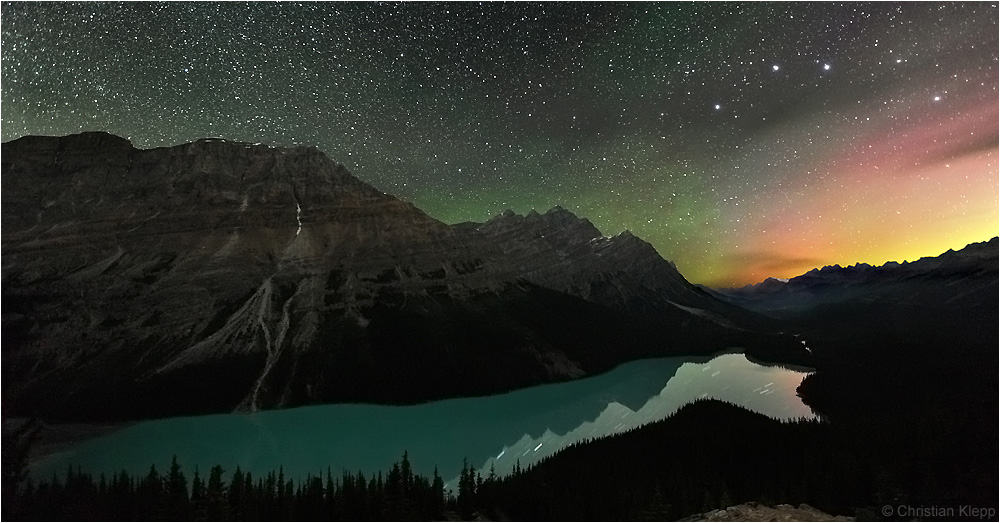






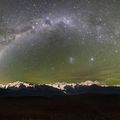

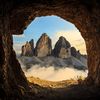




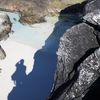


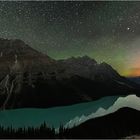
Roger Riechel 12/07/2011 17:48
hamer bild, tolllg roger
Willi-Bremen 26/02/2011 11:01
Einfach Fantastisch!Gruß Wilfried
Olaf Jäckel 22/01/2011 5:58
uff!!!!!stark!!Peter Hiller1947 29/08/2010 10:04
Einfach nur Staunen und träumen..Gruß Don Pedro
Dietmar Tschentke 29/08/2010 9:57
Tolles Bild kann man nicht anders sagenGerhard Radermacher 29/08/2010 9:51
Hallo Christian, Dein Photo vom Peyto Lake ist ja wohl schon etwas länger in der FC, ich habe es aber leider erst heute entdeckt und ich muss Dir sagen, dass ich an dieser Stelle am Peyto Lake schon recht häufig gestanden habe, ich habe dort viel photographiert und viele Bilder von dem See angeschaut, aber so ein beeindruckendes Photo vom Peyto Lake habe ich noch nie gesehen, unglaublich spannend, phototechnisch und gestalterisch perfekt. Ich bin absolut begeistert.Das Deine Photo beim Voting so schlecht abgeschnitten hat sollte Dich übrigens nicht beunruhigen, die Tatsache zeigt nur sehr eindrucksvoll wie die ganze Galerie einzustufen ist....
Nochmal, meine Gratulation zu diesem phantastischen Photo und liebe Grüsse !
Peter Knappert 29/08/2010 9:39
Sehr schönes Gesamtbild, aber das ganze ist mehr oder weniger ja eine Fotomontage. Als versierter Astrofotograf kommentiere ich mal dazu: Die nachgeführten Belichtungen des Sternhimmels wurden gestackt und dann dem langbelichteten Bild überlagert. Fertig. Was mir gefällt ist die Landschaft und der See von der Ästhetik her, was mir nicht gefällt sind die etwas stark aufgeblähten Sterne des großen Wagens und die Künstlichkeit des Bildes.My Deepsky Place
Peter KnappertLG Peter
Lampropeltis Lampropeltis 29/08/2010 9:33
Klasse Bild!! Ich war da auch schon bei Tage wandern und hab mich bei jedem knacken nach Bären umgedreht, ist das nicht im Dunkeln noch extremer?...:-) Wo stehst Du da genau?LG
lamp
EdelS 29/08/2010 9:16
Mein Gott ist das schön. Für Dich bestimmt ein verzaubertes Erlebnis. Traumhaft.Liebe Grüße Edelgard
Ursula F. 29/08/2010 9:14
Boahh.. !! Hab es grad auf der Startseite entdeckt ! Atemberaubend schön ! Sowas hätte ich auch gerne mal gesehen ! Würde das Votingergebnis gerne umdrehen !LG Ursi
Emil Sjölin 29/08/2010 9:08
wow !!! ++++Helmut Gutjahr 27/08/2010 22:01 Commentaire de vote
pro - auch für den Aufwand!† Ute Allendoerfer 27/08/2010 22:01 Commentaire de vote
es fasziniert mich was alles möglich ist.Edina Stojan 27/08/2010 22:01 Commentaire de vote
+++Der Voyager 27/08/2010 22:01 Commentaire de vote
+